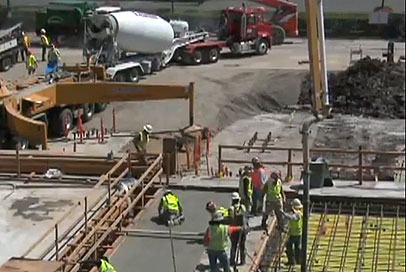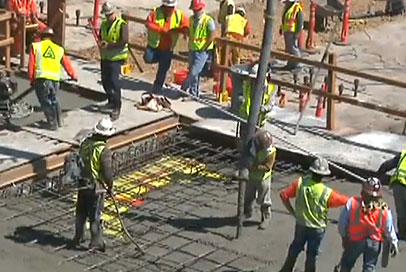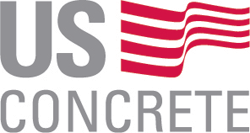New Rapid-Drying Concrete Addresses Floor Covering Failures
Applications
The new technology concrete mixture may be used for any project using concrete. It is especially recommended for use in schools, hospitals, biotechnology facilities, electronics facilities, data centers, and retail stores.
| Characteristics of New Rapid Drying Concrete |
New rapid drying concrete technology addresses moisture emission issues from the beginning and at the source of the problem in the slab. Its characteristics include:
|
Installation Requirements For Rapid Drying Cconcrete
Design professionals should note the following installation requirements for rapid drying concrete. They are based on findings of lab and on-site testing:
Geotechnical considerations
Step 1. If the underside of the slab is at risk of water-in-contact, use appropriate design considerations for a hydraulic structure including effective drainage and waterproofing.
Where possible install a layer of fill material capable of serving as a capillary break such as coarse gravel or crushed stone.

Sub-slab moisture protection
Step 2. A low-permeance vapor retarder should be installed directly in contact with the concrete. The below-slab vapor retarder should conform to the minimum requirements of ASTM E1745 Class A, with a water-vapor permeance reduced to not exceed 0.01 perm (a measure of the rate of transfer of water vapor through a material permeability test) after conditioning.
 |
Photo provided by Stego Industries |
Concrete considerations
Step 3. Use a self-dessicating, rapid dry concrete mix. Insert continuous rebar (optional). Finish concrete to a smooth, but non-burnished finish free of trowel marks or ridges.
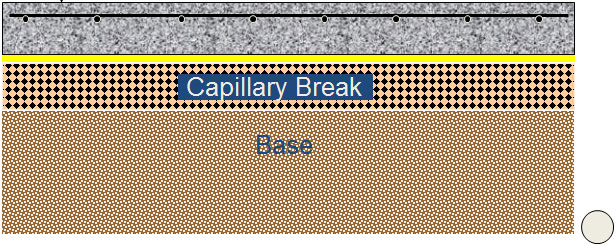
Curing
Step 4 Curing should be accomplished by cover curing the finished slab for 72 hours.
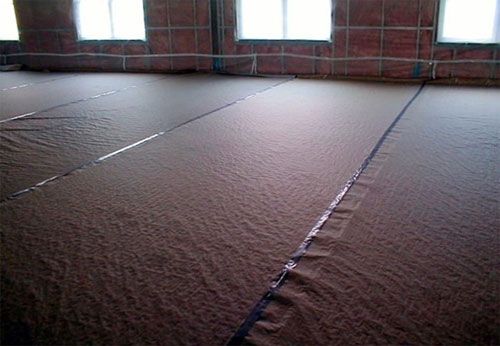 |
Photo provided by Peter Craig |
Surface preparation
Step 5. Remove all traces of oil or wax-based sweeping compounds
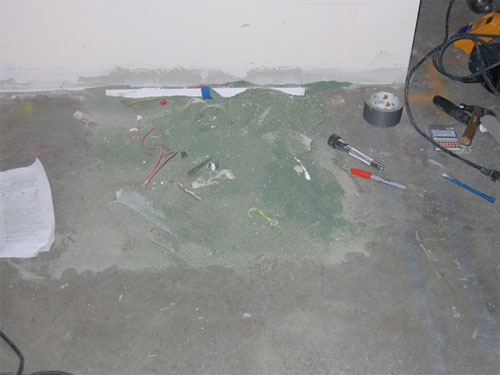 |
Photo provided by Peter Craig |
Testing
Step 6. Post-installation moisture testing is best accomplished through the measurement of the internal relative humidity of the slab in accordance with in-situ RH% test (ASTM F2170.) and MVER testing by the calcium chloride method (ASTM F1869) RH% testing if required. Calcium chloride testing alone does not provide sufficient information to reliably determine the moisture-related suitability of a concrete sub-floor.
It should be noted that a concrete slab will not test to a 3 lb MVER unless the relative humidity is below 40%.
| CASE STUDY ONE | ||
Kenton Rogers, Senior Project Engineer, XL Construction, Milpitas, CA, chose rapid drying concrete for a facility designed to house sensitive equipment that required a controlled environment. “In my experience, I have never had a flooring failure in a job before, because typically we spend a lot of money on topical barriers. For this project we were looking to do a more cost effective and reliable solution that focused on prevention. Rapid drying concrete allowed us to erect steel a day and a half after the concrete was poured. There was a huge schedule gain during the project because we didn't have to apply topical solutions. Another huge benefit, which was a great selling point to the owner, was that if they decided to do remodeling in the future, they would not have to re-apply a moisture barrier." |
| CASE STUDY TWO | ||
Seeking a timely turnaround for a schedule driven project, Nick Dolci, Estimator /Project Manager, Joseph J. Albanese. Santa Clara, CA., used rapid drying concrete for the first time. “The biggest benefit was that all of the moisture comes out of the mix itself, it's all completely used within the hydration process. The other benefit is the fact that you can apply the epoxy flooring much quicker. Using the product is not much different than applying a traditional concrete mix. The pumping was pretty normal at 85 cu yds an hour. The schedule savings are huge for clients who are looking to have their project turned around as quickly as possible.” |
Conclusion
High levels of moisture within a concrete slab can severely impact the health of a building’s occupants and the success or failure of its flooring systems. Moisture-related slab issues currently cost hundreds of millions of dollars each year to correct. A new rapid drying concrete has recently come on the market that solves moisture problems before they arise and eliminates the need for topical moisture mitigation treatments. Design professionals should find this new technology a welcome cost effective solution to moisture-related health hazards and flooring failures that have long beset projects of all types nationwide.




